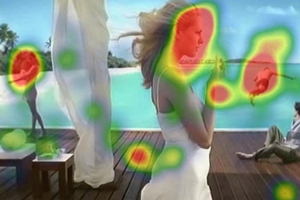Business
The Truth Revealed Dr. Cristel Russell’s Research in Kogod’s Eye Tracking Lab

In an unassuming laboratory in Kogod’s basement, the eyes provide surprising insights into human psychology. In some ways, even the term “laboratory” is a misnomer.
Kogod’s Eye Tracking Lab is in fact a small room containing a non-descript box called the Eye Tracker where faculty conduct psychology-based research.
This past semester, Dr. Cristel Russell, Associate Professor of Marketing, secured a publication in the Journal of Advertising Research for a study conducted in the lab. Russell, whose research focuses on product placements in TV and film, used the lab’s eye tracking technology to research how advertisements shown prior to a television show affect people’s viewing experience.
Using the Eye Tracker to document subjects’ eye moments and pupillary dilation, Russell determined that viewing an advertisement before watching a television show diminishes peoples’ enjoyment of the program. She found that if subjects saw ads before watching a television program, their eyes focused longer on the products shown during the show.
Essentially, subjects who saw advertisements before the TV show suffered from the unpleasant sensation of knowing they’re being manipulated— what scholars refer to as “persuasion knowledge activation.” This results in paying more attention to products embedded in the program and disengagement from the show itself.
The experiment was the first of its kind to use eye tracking technology, and has powerful implications for marketing professionals worldwide. Aspiring Don Drapers would do well to take heed: no matter how sleekly designed or cleverly executed an ad is, when you see the final product, it may have a bigger impact than you'd expect.
Kogod’s Eye Tracking lab also offers research opportunities to graduate students. For more information on the Eye Tracking Lab and how to get involved, visit the Kogod Behavioral Lab homepage.
